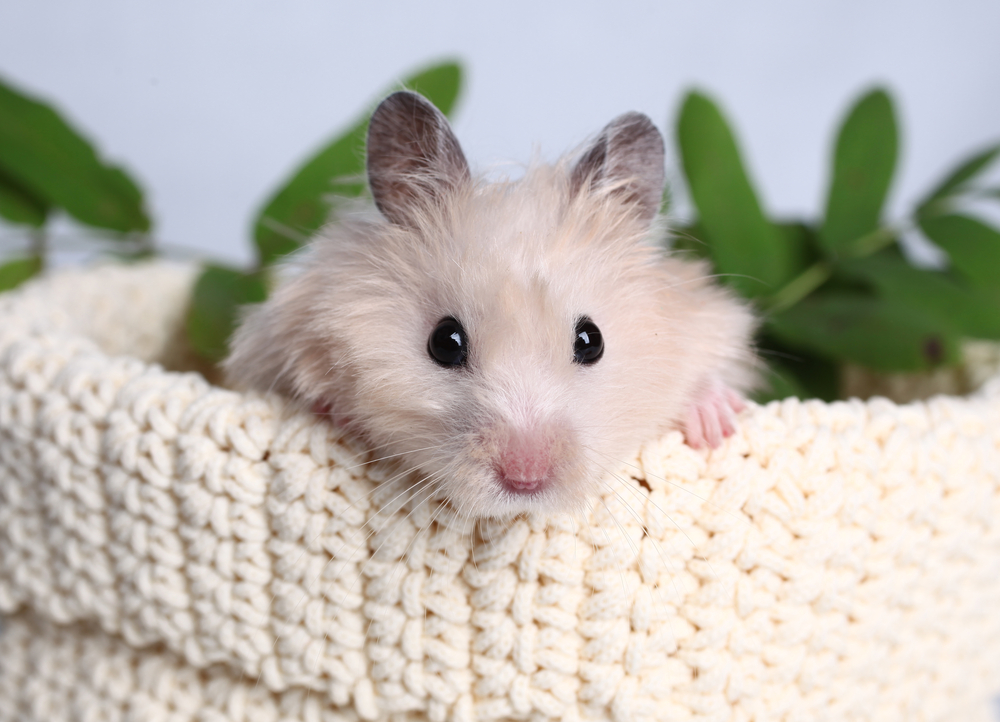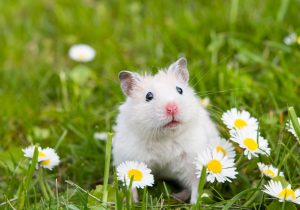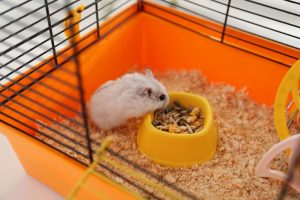
If you are thinking about keeping a pet, hamsters can be a cute, adorable, and loving option. But, you have to bear in mind that there are responsibilities involved, and you have to be willing to commit. Before you share your home with a hamster, you should be aware of some basics about taking care of these cuddly little animals. First things first, you should be aware that the average lifespan of a hamster is 2 to 3 years, depending on the breed you decide to get. A hamster will weigh about 100 to 150 grams and will grow about 4 to 7 inches long.
Hamsters are nocturnal animals, which means they are active during the night and sleep during the day. This makes them the perfect pet for night owls. If you sleep at night, you shouldn’t keep their cage in your bedroom because they will keep you up at night.
But, what other responsibilities do you have to deal with? Here is a complete guide that can assist you in getting a pet hamster and looking after it:
Choosing the right hamster for you
Once you have made up your mind to get a hamster as a pet, you must decide the breed you want. There are several options at your disposal, but the Syrian hamster is the most popular choice for most pet owners. They are also called teddy bear hamsters or Golden hamsters because of their friendly nature, which makes them a great choice for families.

Initially, the little rodent came from Syria’s northern regions and south of Turkey. It would help if you remembered that Syrian hamsters should be housed alone because they do get violent in pairs, as they often fight over territory. It is also possible to train Syrian hamsters, as long as you can be patient. Keeping up with Syrian hamsters is easier because they are slower-paced, particularly during training.
The dwarf hamster is another popular category of hamster that you can explore. You will find that these dwarf hamsters that can be found in most pet stores are often three species of the dwarf hamster, which are the Roborovski, Campbell’s, and Winter White, which are Russian hamsters. You will also find a fourth dwarf hamster, which is Chinese, but it is not related to the other three hamsters that belong to the dwarf category.
The smallest kind of hamster is the Roborovski dwarf, as it does not grow over 3 inches, but it is very active and fast. Their lifespan is somewhere between 3 and 3.5 years. Campbell’s dwarf hamsters are very common in pet stores and have a dark grey appearance, and have a lifespan of about 2 years.
Another kind of hamster is Winter White that tends to become white during the winter season, hence the name. But they retain their original dark grey color in captivity because of artificial lighting and heat. Other than dark grey coloring, you can find them in other colors, such as sapphire, pearl, marbled or sapphire pearl. Their lifespan is between one and a half and two years.

Chinese hamsters are often regarded as dwarf hamsters because they have a dorsal stripe similar to Campbell’s and White Winter dwarf hamsters and their short stature. Their lifespan is between 1.5 to 2 years. You will also discover that hamsters of the hybrid dwarf kind are also available, which share numerous features of both the Campbell’s and Winter White. Cross-breeding aims to bring about an attractive coloring, yet it has become controversial because it can lead to health problems.
If you are thinking about getting a dwarf hamster, you can explore Campbell’s and Winter White because these hamsters are relatively easy to deal with when it comes to training and making the best pets.
Feeding the hamster
When hamsters live in the wild, they feed on seeds, plants, insects, and fruits. If you keep a hamster as a pet, the diet recommended for them is a pelleted rodent ration that should have about 15 to 20% protein. You can further find seed diets for your hamsters, but these tend to be high in fat and can result in calcium deficiencies and obesity when fed alone.
In addition, feel free to give your pet hamster other treats and supplements in moderation, including fresh fruits and vegetables, cheese, and sugarless breakfast cereals. The fruits and vegetables recommended for hamsters include apples, parsley, turnips, carrots, pear, and broccoli. It would help if you steered clear of oranges, potatoes, lettuce, leeks, chives, garlic, and onions. A stick of fruitwood can also be given to your hamster to wear down their growing teeth.

Ensure that your hamster always has access to freshwater, which can be given by putting sipper bottles on the cage. Keep the tube of the sipper low enough so the hamster can reach it comfortably. The water should also be changed at least once a day.
Housing the hamster
When you are shopping for a cage for your pet hamster, you will come across a variety of options available. The best options to explore are cages made with durable glass or plastic, stainless steel, or wire. However, you should note that plastic and glass cages tend to have poor ventilation, so one side of the cage should be left open for air circulation, as this can prevent high temperature, high humidity, as well as odor concentration.
You should avoid getting a cage made of light plastic, wood, or soft metal because hamsters love chewing, and they will likely chew through the cage. It is also best to go with rounded corners for the same reason.

It is also a must to get some cage accessories for your little guy! An exercise wheel is the best option to keep your hamster happy and occupied. Avoid getting wheels made of wire because those can be dangerous, and give preference to solid plastic wheels since these are safer.
Get a large plastic ball in which you can put your hamster so that they can run around a room. Your hamster will enjoy exploring, but it should only be done under supervision. Nesting boxes and tunnels are some other options you can check out.
You can invest in a habitat that boasts plastic tubes for tunnels. Just make sure these tunnels are big enough to accommodate your hamster because you don’t want your pet to get stuck. Make sure you also provide the hamster with deep bedding they can use for burrowing. Get dust-free, absorbent, non-toxic, and clean bedding, such as shredded tissue, shredded paper, processed corn cob, or wood shavings.
If you opt for corn cob or wood shavings, you must ensure they are free of mildew, mold, and other contaminants. Scented bedding is a definite no-no because it may contain chemicals, leading to respiratory issues. It can also clump litter, which can lead to digestive issues in the hamster. It is also a must to clean the hamster’s cage once or twice a week with regular soap and water. Additionally, bedding needs to be changed completely every week.
Handling your hamster
Whenever you decide to pick up your hamster, make sure you cup them gently in your hands and always hold them against your body. A lot of people are under the misconception that hamsters are aggressive animals and will bite you, but hamsters that are handled frequently from a young age remain friendly and docile.

If you purchase a new hamster and are unsure of its personality, it is best to approach it with caution, especially if they haven’t been handled before. Even a docile one will bite if you surprise or awaken a hamster.
Conclusion
Hamsters are excellent pets for any family looking for an alternative to the traditional cat or dog. They have extremely good temperaments, they can be litter trained, and you don’t need a lot of space to house them.
If you follow these tips on how to care for your hamster, your little friend will give you lots of love and appreciation.






